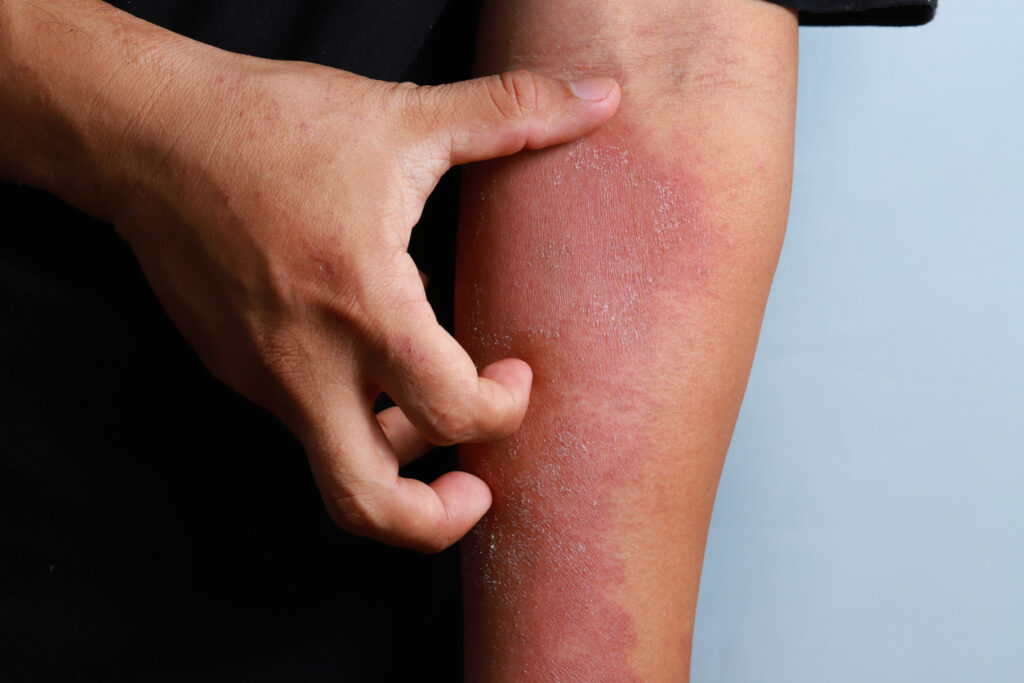Roflumilast cream 0.15% (Zoryve, Arcutis) rapidly decreases the impact of atopic dermatitis (AD), including sleep loss and daily activities, on patients, families, and caregivers, according to data presented at the American College of Allergy, Asthma and Immunology (ACAAI) 2024 Annual Scientific Meeting in Boston, MA.
Roflumilast cream 0.15% also resulted in significant improvements across all efficacy endpoints, including validated Investigator Global Assessment-Atopic Dermatitis (vIGA-AD) Success and rapid itch reduction within 24-hours of first application. Patients using Roflumilast cream 0.15% also reported improvements in SCORing AD (SCORAD) total score, Patient-Oriented Eczema Measure (POEM), and Dermatitis Family Impact (DFI), when compared to their counterparts using vehicle at 4 weeks, with improvement reported as early as Week 1, the first timepoint measured.
“AD is a chronic, complex disease that can negatively affect the individual and the broader family unit, impacting relationships, sleep, and basic functions in life, like school attendance, housework, food preparation, and more,” says study author Mark Boguniewicz, MD, a professor in the Division of Allergy-Immunology, Department of Pediatrics, at National Jewish Health and University of Colorado School of Medicine in Denver CO.
“These new data show that treatment with ZORYVE not only provides rapid disease clearance and significant reduction in itch for the patient, but extends beyond that, reducing the impact of quality of life challenges that families and caregivers experience as a result of having a loved one living with a chronic skin disease like AD.”
Treatment with Roflumilast cream 0.15%improved all patient-reported outcomes measured compared to vehicle including:
- 64.2% of individuals treated with Roflumilast cream 0.15%achieved a clinically meaningful improvement in SCORAD Total Score compared to 36.3% treated with vehicle at Week 1.
- 46.2% of individuals treated with Roflumilast cream 0.15%demonstrated improvement in SCORAD Total Score compared to 26.6% of patients treated with vehicle at Week 4.
- 61.7% of Roflumilast cream 0.15%treated individuals achieved a clinically meaningful improvement in POEM scores compared to 34.2% treated with the vehicle at Week 1.
- Greater improvement in POEM scores were seen with Roflumilast cream 0.15%compared to vehicle at Week 4.
- Greater improvement in DFI scores were seen with Roflumilast cream 0.15%treated patients compared to vehicle at Week 4.
As previously reported and published in JAMA Dermatology, across both studies (INTEGUMENT-1 and INTEGUMENT-2), roflumilast cream 0.15% met the primary efficacy endpoint of Investigator Global Assessment (IGA) Success, defined as a validated Investigator Global Assessment – Atopic Dermatitis (vIGA-AD) score of Clear or Almost Clear plus a 2-grade improvement from baseline at Week 4 (31.3% roflumilast cream 0.15% vs. 14.1% vehicle). Roflumilast cream 0.15%0.15% was safe and well tolerated. The Incidence of Treatment Emergent Adverse Events (TEAEs) was low in both roflumilast cream 0.15%- and vehicle-treated patients. The most common adverse reactions were headache, nausea, application site pain, diarrhea, and vomiting.


